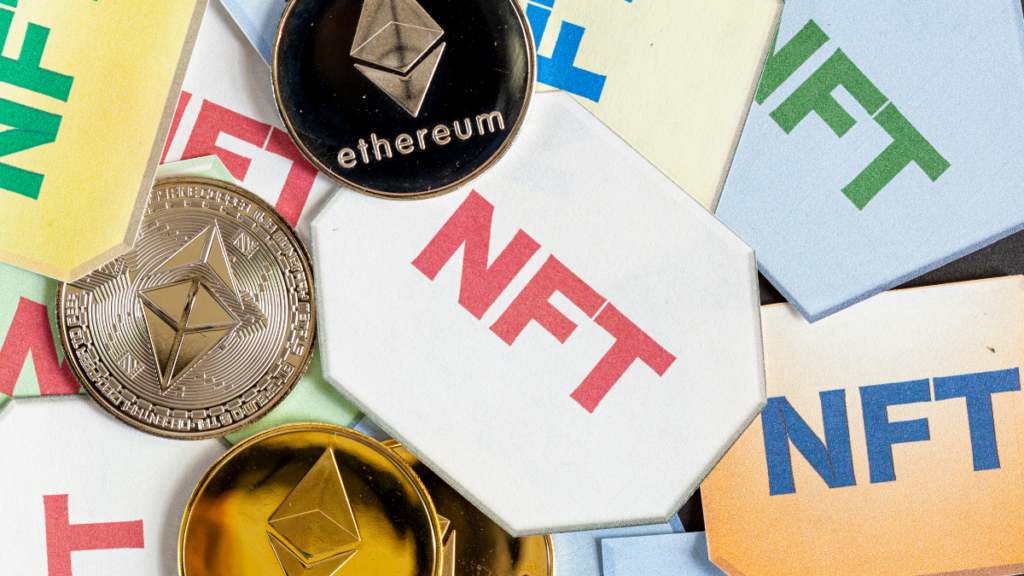Annunci
Unlocking the Future of Art with NFTs, Where Creativity Meets Blockchain

The art world has undergone a transformation with the advent of Non-Fungible Tokens (NFTs), and you’ve likely heard the buzz about these unique digital assets.
NFTs are revolutionizing how we perceive ownership and value in art, providing a means for digital creations to be bought, sold, and collected securely online.
Unlike traditional art pieces, NFTs are cryptographic assets on blockchain with unique identification codes, ensuring that every digital piece is one-of-a-kind.
As an enthusiast or a newcomer to this digital frontier, you’re part of a growing community that’s navigating the exciting possibilities NFTs bring to creators and collectors alike.
Artists are now able to monetize their work in ways that were previously unavailable, while you, the collector, get to own a piece of digital history.
These tokens aren’t limited to just art; they can include anything digital, from music to memes, making the scope of what can be called an “NFT” incredibly wide.
The digital art trends enabled by NFTs signal a shift in how art is consumed and conceptualized. No longer restricted to physical galleries or exclusive circles, digital art has found a dynamic and democratic platform in the blockchain.
Your understanding of art’s value is being redefined as you witness artists gaining more control over their work and its distribution.
NFTs are not just a passing craze; they represent a new chapter in the evolution of art in the digital age.
Understanding NFTs
In this section, you’ll gain clarity on what NFTs are and the technological framework they operate within.
Definition and Origins
NFTs, or Non-Fungible Tokens, are unique digital assets verified using blockchain technology, which establishes proof of ownership and authenticity.
Unlike cryptocurrencies, each NFT is one-of-a-kind, with its distinct value typically determined by market demand.
The concept of NFTs originated as a way to create scarcity and ownership within the digital realm. Cryptokitties, launched in 2017, is widely recognized as one of the first projects to popularize NFTs, paving the way for the digital art trends you see today.
Technology Behind NFTs
The technology that underpins NFTs is predominantly built on the Ethereum blockchain, although other blockchains like Flow and Tezos also support them.
These tokens adhere to specific standards, such as ERC-721 E ERC-1155, which define the rules for their creation and transaction. Here’s a simplified overview of the process:
- Minting: An NFT is created or ‘minted’ through a smart contract, which is a self-executing contract with the terms directly written into code.
- Blockchain: Once minted, the NFT’s information is stored on a blockchain, ensuring that records cannot be altered, which creates permanence and security.
- Smart Contracts: These govern the interactions with NFTs, including transfers and sales, and can also include royalties for the original creators on subsequent sales.
The NFT Market Boom
In recent years, the NFT (Non-fungible Token) market has experienced unprecedented growth, transforming how you buy, sell, and interact with digital art.
Key Players and Platforms
OpenSea E Rarible have become pioneers in the NFT space, providing robust platforms for you to trade and collect digital assets.
Meanwhile, Nifty Gateway caters to premium and exclusive releases, often collaborating with high-profile artists. Additionally, SuperRare focuses on single-edition art pieces, emphasizing quality and exclusivity.
- OpenSea: A user-friendly marketplace with a diverse range of NFTs.
- Rarible: Offers a democratic and governance model where you have a say.
- Nifty Gateway: Known for high-profile drops and collaborations.
- SuperRare: Where you’ll find single-edition digital artworks.
Notable Sales and Records
In March 2021, digital artist Beeple sold a collage, “Everydays: The First 5000 Days,” for a record-breaking $69 million at Christie’s.
This sale put NFTs in the spotlight, propelling them into mainstream conversations. Another example is the first tweet by Jack Dorsey, Twitter’s founder, which sold as an NFT for over $2.9 million.
- Beeple’s “Everydays”: Sold for $69 million.
- Jack Dorsey’s First Tweet: Sold for $2.9 million.
Impact on Artists and Creators
NFTs have empowered artists and creators, enabling you to monetize your work in ways never before possible.
The technology offers a new revenue model through smart contracts, which ensure you receive royalties from secondary sales.
- Empowerment: Artists directly earn from initial sales.
- Royalties: Ongoing earnings from future resales.
- Authenticity: NFTs provide provenance and ownership history.
NFTs represent a new frontier in the digital economy, offering both opportunities and challenges for you as creators, investors, and collectors.